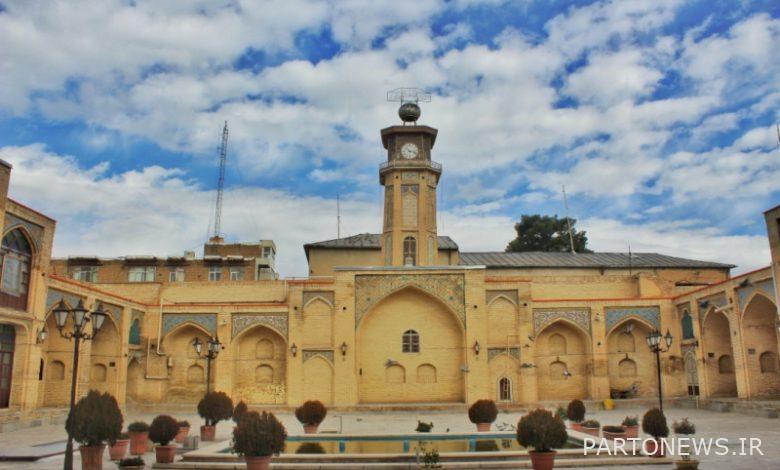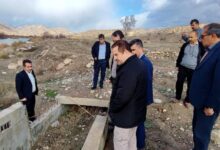Kermanshah, a gift that must be seen again

If we want to define Kermanshah province from a cultural and natural point of view in general, and tourism in particular, it should undoubtedly be addressed as follows: what is good for everyone, you have a place!
Those who think a little about the tourist attractions of Kermanshah are so amazed by the diversity of these attractions that they will not be able to imagine the extent of the amazing tourism potentials of this land.
The variety of tourist attractions in this country is such that it has something to offer according to every taste. Those who pursue tourism from the point of view of nature tourism, from the dusty mountains of this land to its mysterious caves and thick rocks, from flowing rivers to fertile plains and from its dense forests to its huge valleys, are a good excuse to discover this unique nature. they do.
From a historical point of view, the history of human life in this land goes back hundreds of thousands of years, from the time when they learned the basic alphabet of life in caves until agriculture and animal husbandry spread from Kermanshah and later when the roots of civilization flourished in their institution and local governments. And they created a nation. We always see a trace of human beings in its plains and mountains. Perhaps it is not unreasonable to consider Kermanshah as a treasure trove of the history of Iran, which has had many professions to say not only in a period of history.
Culturally, the greatest heritage of this land is the people who have created a large structure of interesting traditions, customs and stories with various mirrors and beliefs such as chains. The presence of many celebrities in the sky of Iranian culture and literature adds to the charm of this province and shows the stable cultural position of Kermanshah.
Kermanshah province, as the westernmost province of Iran, has long been the gateway to the holy shrines of Aaliyat, and hosting a large number of pilgrims has caused the lives of its people to be uniquely intertwined, such as a short or sometimes permanent companionship with each of these travelers to Iraq. We have witnessed the emergence of interesting cultural phenomena. This is how the architecture, language, food, clothing and behavior of the people of this land, which had a strong foundation, are beautifully adorned in connection with the culture of passers-by, and today it has such a charm that it can hardly be found anywhere else in Iran. Found. According to the prominent professor of Persian literature, Dr. Mir Jalaluddin Kazazi, Kermanshah is the Afshar of Iran and therefore it can be called Little Iran. A sentence that clearly speaks of the high cultural diversity and ecology of this land.
It is no secret that the land of Kermanshah has unparalleled potential in terms of tourism, which is evidenced by the two registered works, globalized in the tangible heritage of UNESCO, namely the inscription of Darius the Achaemenid in Biston and the cultural landscape of Horaman. Also, the registration of Kermanshah as a creative city of food in the UNESCO World Network of Creative Cities and its remarkable role in many of the intangible Iranian heritage recorded by UNESCO in human memory reinforces the claim that this land should be overthrown with a new look. . Of course, this is not the whole story and should be noted for other historical attractions of this land such as Taqebistan lithographs or the historical antiquity of Anubani lithograph which is considered to be the ancestor of Darius I inscription and also the temple of Anahita which is dated by Isidore Kharaksi, the first geographer of ancient Greece. Has been registered, he noted. Perhaps the hope of registering these works alone or in the form of the Sassanid historical path is a right that must be fulfilled soon so that we can witness the repetition of the name of this wonderful land more than before. How beautiful it is if these attractions are tied to folk and literary stories such as the legend of Shirin and Farhad in order to make the audience see and hear.
There are also a variety of handicrafts such as the world-famous Glim Hersin, the Horami quilt, which has a long history of human life in this Ahuraian land, various handicrafts such as carpets and rugs, the ancient blacksmith industry and the making of the tambourine, a sacred instrument among the Dalahu people. It has caused an increasing attraction of tourists to use the handicrafts of the people of Kermanshah province. Of course, travelers’ enjoyment of traveling to this beautiful province is not the only handicraft, and the high variety of delicious souvenirs such as rice bread, coke, date bread, sugar bread and of course animal oil, which all Iranians know as Kermanshahi oil, causes suitcases. When saying goodbye to Kermanshah, travelers should be full of sweet luggage, just like their minds, which are full of memorable memories.
In recent years, efforts have been made to strengthen the tourism infrastructure in the province, which in turn is valuable but deserves to be pursued with greater effort so that not only does this country achieve what it deserves, but Iranians and the world have the opportunity to learn about historical identity. To acquire the cultural and natural resources of Kermanshah province. The development of sustainable tourism in Kermanshah can easily control the problem of unemployment in this country and in the shadow of security for the citizens, we can see the flourishing of new talents from this country.
Obviously, a geographical area alone can not develop, and if this issue is examined in the category of tourism, the need to strengthen this industry in all western provinces in the form of a coherent structure is undeniable. It is hoped that by strengthening the necessary communications, we can witness a boom in tourism in the beautiful province of Kermanshah.

